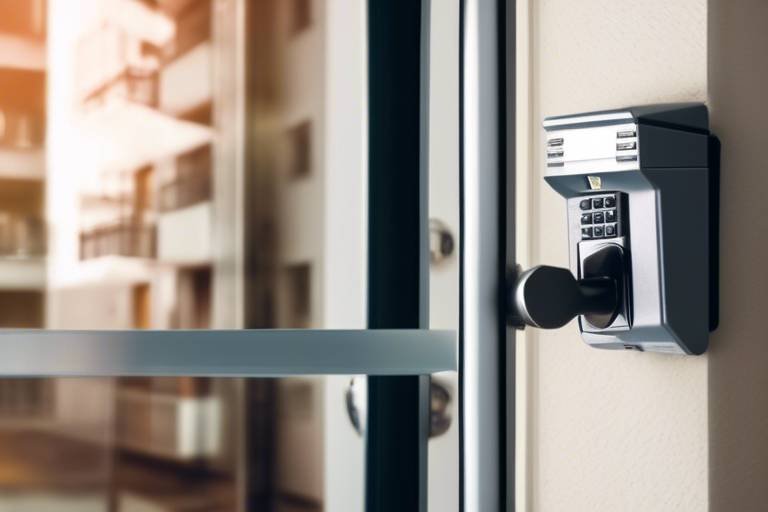Proactive Measures to Make Your Home Environment Disaster Resilient
When it comes to our homes, we often think of them as our sanctuaries, the places where we feel safest. However, the reality is that disasters can strike when we least expect them. Whether it's a sudden earthquake, a raging wildfire, or a catastrophic flood, being unprepared can turn our cozy abode into a scene of chaos. That's why it's crucial to take proactive measures to make your home environment disaster resilient. Not only does this ensure the safety of your loved ones, but it also protects your investment and peace of mind. So, how can you fortify your home against the unpredictable forces of nature and man-made incidents? Let's dive into some practical strategies that can help you enhance your home's resilience.
Before we can safeguard our homes, we need to understand the types of disasters that pose a threat. Natural disasters like floods and earthquakes can occur without warning, while man-made incidents such as fires or chemical spills can happen due to human error or negligence. By being aware of these risks, we can take the first step toward resilience. Imagine your home as a fortress; to defend it effectively, you must know your enemies. Here’s a brief overview of common disaster risks:
- Floods: Can occur due to heavy rainfall, melting snow, or dam failure.
- Earthquakes: Sudden shaking of the ground that can cause significant structural damage.
- Wildfires: Often exacerbated by dry conditions and high winds.
- Hurricanes: Powerful storms that bring heavy rain, strong winds, and storm surges.
Now that we understand the risks, the next step is to assess your home's vulnerabilities. Think of this as a health check-up for your house. Identifying weak points is essential to prioritize improvements and repairs. Start by evaluating different aspects of your home that may be susceptible to damage. For instance, check your basement for potential flooding issues, inspect your roof for wear and tear, and ensure that your windows and doors are properly sealed. This assessment can save you from costly repairs down the line and give you peace of mind.
The strength and stability of your home's structure play a vital role in disaster preparedness. A solid foundation, sturdy walls, and a reliable roof are your first line of defense against the elements. Regular inspections of these elements can help you identify any weaknesses before they become major issues. For instance, consider the following:
Your foundation is the bedrock of your home, literally! Strengthening it against earthquakes and flooding is crucial. Techniques like anchoring your home to its foundation and using flood-resistant materials can minimize damage. Think of your foundation as the roots of a tree; the stronger they are, the less likely the tree is to topple during a storm.
Have you ever been caught in a storm with a leaky roof? It's not fun! Regular roof inspections and maintenance can prevent leaks and structural failures when the winds pick up. Make sure to conduct timely repairs and consider using durable roofing materials that can withstand harsh weather conditions. A well-maintained roof is like an umbrella; it protects you from the rain, keeping you dry and safe inside.
Creating a comprehensive emergency plan for your family is essential. This plan should cover communication strategies, evacuation routes, and emergency contacts. In the event of a disaster, having a clear plan can make all the difference. Think of it as a roadmap; when the unexpected happens, you want to know exactly where to go and what to do. Gather your family and discuss the plan, ensuring everyone knows their role and responsibilities. Remember, preparation is key!
Choosing the right materials for your home can significantly reduce the impact of disasters. Investing in disaster-resistant building materials not only enhances your home's resilience but also provides long-term benefits. For example, consider flood-resistant materials like water-resistant drywall and elevated electrical systems. These materials can help minimize damage and facilitate easier recovery after a flood. Similarly, incorporating fire-resistant features into your home design can protect against wildfires. Fire-retardant materials and strategic landscaping can create a defensible space around your property, reducing the risk of fire spreading.
Finally, don’t underestimate the importance of community involvement in disaster preparedness. Local resources, support networks, and training programs can enhance collective resilience during emergencies. Connect with your neighbors and participate in community preparedness initiatives. Remember, in times of crisis, we are stronger together. Your community can be a valuable asset in times of need, providing support, information, and resources that can make a significant difference.
Q: What are the first steps I should take to prepare my home for a disaster?
A: Start by assessing your home’s vulnerabilities and understanding the types of disasters that could affect your area. Create an emergency plan and invest in disaster-resistant materials.
Q: How often should I inspect my home for potential risks?
A: It's advisable to conduct inspections at least once a year, but consider doing them more frequently if you live in an area prone to natural disasters.
Q: What resources are available for community disaster preparedness?
A: Many local governments and organizations offer training programs, workshops, and resources for disaster preparedness. Check with your local emergency management office for more information.

Understanding Disaster Risks
When we think about our homes, we often picture a safe haven, a place where we can unwind and feel secure. However, the reality is that our homes are not immune to disasters. Understanding the risks that can impact your living space is the **first step** toward building a resilient environment. Disasters can strike without warning, and they come in various forms, including natural calamities and man-made incidents. By being aware of these risks, we can take proactive measures to protect our homes and loved ones.
Natural disasters, such as **floods**, **earthquakes**, **hurricanes**, and **wildfires**, can wreak havoc on our properties. Each of these events carries unique challenges and requires specific preparations. For instance, floods can cause significant water damage, while earthquakes can compromise the structural integrity of your home. On the other hand, wildfires can spread rapidly, threatening homes that are not adequately defended. It's crucial to recognize these risks and understand how they can affect your area.
In addition to natural disasters, we must also consider man-made incidents like **industrial accidents**, **terrorism**, and **civil unrest**. These events can disrupt our lives in unexpected ways, making it essential to have a comprehensive understanding of the potential threats. For example, living near a chemical plant may expose your home to hazardous material spills, while urban areas might face risks related to civil disturbances.
To help visualize the various types of disasters, consider the following table that summarizes the most common risks:
| Type of Disaster | Description | Potential Impact |
|---|---|---|
| Flood | Excessive rainfall or storm surges causing water overflow | Water damage, mold growth, loss of personal belongings |
| Earthquake | Sudden shaking of the ground due to tectonic shifts | Structural damage, injuries, potential loss of life |
| Hurricane | Severe tropical storms with high winds and heavy rains | Wind damage, flooding, power outages |
| Wildfire | Uncontrolled fires in forests or grasslands | Property destruction, air quality issues, evacuation |
| Industrial Accident | Hazardous material release from factories or plants | Health risks, environmental damage, evacuation |
By familiarizing yourself with these risks, you can start to assess your home's vulnerabilities and prioritize the necessary improvements. Knowledge is power, and understanding the potential threats can empower you to take action. Ask yourself: What type of disasters are most likely to occur in my area? How can I prepare my home to withstand these events? The answers to these questions will guide you in creating a safer living environment.
In conclusion, being aware of the various disaster risks is crucial for every homeowner. By understanding what threats exist and how they can impact your home, you can better prepare yourself and your family. Remember, preparation is not just about having supplies on hand; it's about creating a mindset that values safety and resilience. So, take the time to educate yourself, assess your home, and implement proactive measures. Your future self will thank you!

Assessing Your Home's Vulnerabilities
When it comes to disaster preparedness, the first step is to understand your home's vulnerabilities. Every home has its own set of strengths and weaknesses, and knowing where these lie can make a world of difference in ensuring safety during unforeseen events. Think of your home as a fortress; if you know where the weak spots are, you can fortify them before the storm hits. This assessment isn't just about looking for cracks in the walls; it's about taking a holistic view of your property and identifying potential risks that could lead to significant damage.
Start by examining the structural integrity of your home. This includes evaluating key elements such as:
- Foundation: Is it solid and stable, or are there signs of settling or cracking?
- Walls: Are they reinforced and capable of withstanding high winds or seismic activity?
- Roof: Does it show signs of wear or damage that could lead to leaks during heavy rain?
Each of these components plays a critical role in your home's overall resilience. For instance, a strong foundation can help your home withstand earthquakes, while a well-maintained roof can prevent water damage during floods. It's essential to conduct regular inspections and, if necessary, consult with professionals to address any vulnerabilities you uncover.
Now, let’s dive deeper into the structural integrity of your home. This is where the rubber meets the road. A solid structure is your first line of defense against disasters. If your home has been standing for decades, it might be time to give it a thorough check-up. Look for signs of wear and tear, especially in areas that are prone to stress, such as:
- The basement, where moisture can accumulate
- The attic, which can be vulnerable to extreme temperatures
- Exterior walls that face harsh weather conditions
By identifying these areas, you can prioritize repairs and enhancements. For example, if your foundation shows signs of cracking, investing in reinforcement can save you a lot of headaches down the line.
Speaking of foundations, let’s talk about how to strengthen your home's foundation against earthquakes and flooding. Techniques such as anchoring your home to its foundation and using flood-resistant materials can be game-changers. Flood-resistant materials, like concrete blocks and pressure-treated wood, can significantly reduce the risk of damage during a flood. Additionally, elevating your home on piers or platforms can keep it safe from rising waters.
Next up is roof maintenance. Your roof is your home’s umbrella, and if it’s full of holes, you’re going to get drenched! Regular inspections can help you catch small issues before they turn into major problems. Look for missing shingles, rusted flashing, or any signs of sagging. If you notice any of these, don’t wait until the next storm to take action. Timely repairs can prevent leaks and structural failures that could lead to catastrophic damage.
In conclusion, assessing your home’s vulnerabilities is not just about identifying problems; it’s about taking proactive steps to enhance your home’s resilience. By understanding the structural integrity of your home and addressing any weaknesses, you can create a safer living environment for you and your family.
Q1: How often should I assess my home's vulnerabilities?
A1: It's advisable to conduct a thorough assessment at least once a year, or after any significant weather event.
Q2: What should I do if I find vulnerabilities?
A2: Prioritize repairs based on the severity of the vulnerabilities and consult with professionals if necessary.
Q3: Are there specific materials I should consider for disaster resilience?
A3: Yes, materials like water-resistant drywall for flood-prone areas and fire-retardant materials for wildfire-prone regions are highly recommended.

Structural Integrity
When it comes to disaster preparedness, is your home's first line of defense. Think of your home as a fortress; if the walls are weak, even the slightest storm can bring it tumbling down. Evaluating the strength and stability of your home is crucial for ensuring that it can withstand the forces of nature or any unforeseen calamities. Begin by examining the essential components of your house: the foundation, walls, and roof. Each of these elements plays a significant role in maintaining the overall stability of your home.
Let’s break it down a bit. The foundation is like the roots of a tree; it anchors your home to the ground and provides support. A solid foundation can help prevent issues such as settling or cracking, which can lead to more significant problems down the line. Regular inspections are vital. Look for signs of moisture, cracks, or shifting soil around your foundation. If you notice any of these issues, it might be time to call in a professional to assess the situation.
Next up, the walls! These are your home’s protective barrier against the elements. Ensure that the walls are constructed with durable materials that can withstand various weather conditions. For instance, reinforced concrete or brick walls are excellent choices for resisting high winds and seismic activity. If your home is older, consider adding reinforcements such as steel braces or shear walls to enhance its resilience.
And let’s not forget about the roof! It’s your home’s shield against rain, snow, and harsh sunlight. Regular roof maintenance is essential to prevent leaks, which can lead to mold growth and structural damage. Schedule inspections at least once a year, especially after severe weather. During these inspections, check for missing shingles, rusted flashing, or any signs of wear and tear. It’s also a good idea to use durable roofing materials that are designed to withstand extreme weather conditions.
To summarize, here are the key elements to focus on for maintaining your home’s structural integrity:
- Foundation: Inspect for cracks and moisture.
- Walls: Use durable materials and consider reinforcements.
- Roof: Regular maintenance and inspections are crucial.
In conclusion, ensuring your home’s structural integrity is not just about aesthetics; it’s about protection and preparedness. By regularly assessing and reinforcing these critical components, you can significantly enhance your home’s ability to withstand disasters. Remember, a resilient home is a safe home!
Q: How often should I inspect my home's foundation?
A: It's recommended to inspect your foundation at least once a year, or more frequently if you live in an area prone to flooding or seismic activity.
Q: What materials are best for reinforcing walls?
A: Reinforced concrete, steel braces, and shear walls are excellent choices for enhancing wall strength against disasters.
Q: How can I ensure my roof is prepared for extreme weather?
A: Regular inspections, timely repairs, and using durable roofing materials can help ensure your roof withstands extreme weather conditions.

Foundation Reinforcement
When it comes to ensuring your home can withstand the forces of nature, stands out as a critical component. Think of your home’s foundation as the sturdy base of a tree; without a strong base, even the tallest tree can topple in a storm. To effectively fortify your foundation against disasters like earthquakes and flooding, you need to implement several key strategies.
First and foremost, it's essential to assess the existing condition of your foundation. Look for signs of wear and tear, such as cracks or settling. If you notice any issues, it’s time to consult with a professional to determine the best course of action. A structural engineer can provide invaluable insights, ensuring that your foundation is not just strong but also resilient.
One of the most effective methods for reinforcing your foundation is through anchoring. This technique involves attaching your home to its foundation with steel rods or straps. This not only enhances stability during seismic activities but also helps prevent your home from shifting during heavy flooding. Imagine your home as a ship in turbulent waters; anchoring keeps it securely moored despite the chaos around it.
Additionally, using flood-resistant materials is vital. When constructing or renovating your foundation, consider employing materials that can withstand water exposure. For instance, using concrete with a higher water resistance rating can significantly reduce the risk of water damage. You might also want to elevate your foundation, especially in flood-prone areas, to keep your living space safe from rising waters.
Here’s a quick overview of some effective foundation reinforcement techniques:
| Technique | Description |
|---|---|
| Anchoring | Attaching the home to the foundation with steel rods or straps for stability. |
| Flood-Resistant Materials | Using concrete and other materials designed to resist water damage. |
| Foundation Elevation | Raising the foundation to prevent floodwaters from entering the home. |
Lastly, don’t underestimate the power of regular maintenance. Just like a car, your foundation requires periodic checks to ensure it remains in top shape. Schedule inspections every few years, especially after significant weather events, to catch any potential issues early. By taking these proactive measures, you can significantly enhance your home's resilience against disasters, ensuring it stands strong when faced with nature's challenges.
- How often should I inspect my foundation? It's advisable to inspect your foundation at least once every few years, or after severe weather events.
- What signs indicate my foundation needs reinforcement? Look for cracks, uneven floors, or doors and windows that stick—these can all be signs of foundation issues.
- Can I reinforce my foundation myself? While some minor repairs can be DIY, it’s best to consult a professional for significant reinforcement projects.

Roof Maintenance
When it comes to safeguarding your home from the unpredictable wrath of nature, stands as a crucial pillar of disaster preparedness. Think of your roof as the helmet of your house; without it, everything below is vulnerable to the elements. Regular inspections and timely repairs can be the difference between a minor inconvenience and a catastrophic failure during a storm. So, what exactly should you be looking for when maintaining your roof?
First and foremost, inspect for damage. After every major storm, it's wise to climb up (safely, of course!) or use binoculars to check for any missing shingles, cracks, or leaks. These seemingly small issues can turn into big problems if left unattended. For instance, a small leak can lead to mold growth, which not only damages your home but also poses health risks to your family.
Another key aspect of roof maintenance is ensuring that your gutters are clean and functional. Clogged gutters can cause water to back up, leading to overflow that can damage your roof and even the walls of your home. To avoid this, make it a habit to clean your gutters at least twice a year, or more frequently if you live in a heavily wooded area. If climbing up a ladder isn’t your thing, consider hiring a professional to do the job.
Furthermore, the materials you choose for your roof can significantly impact its durability. Opt for high-quality roofing materials that are designed to withstand harsh weather conditions. For instance, metal roofs are known for their longevity and resistance to wind and hail, while asphalt shingles can be a cost-effective option if properly maintained. Always consult with a roofing professional to determine the best materials for your specific climate and home style.
Lastly, don’t underestimate the power of professional inspections. Scheduling a thorough inspection by a qualified roofing contractor once a year can catch potential issues before they escalate into costly repairs. These experts can identify weak points in your roof’s structure and recommend necessary enhancements. After all, a stitch in time saves nine!
In summary, maintaining your roof is not just about aesthetics; it’s a vital component of your home’s disaster resilience. By keeping an eye on its condition, ensuring proper drainage, selecting the right materials, and seeking professional advice, you can fortify your home against the elements, ensuring safety for you and your loved ones.
- How often should I inspect my roof? It's recommended to inspect your roof at least twice a year and after any major storms.
- What are the signs that my roof needs repair? Look for missing shingles, leaks, sagging areas, and granules in your gutters.
- Can I clean my gutters myself? Yes, but if you're uncomfortable with heights, hiring a professional is a wise choice.
- What roofing materials are best for storm-prone areas? Metal roofs and impact-resistant shingles are excellent choices for durability.

Emergency Preparedness Plans
When it comes to safeguarding your home and loved ones, having a solid Emergency Preparedness Plan is like having a lifeboat on a ship—essential for navigating through turbulent waters. You never know when disaster might strike, whether it’s a natural calamity like a hurricane or a sudden man-made incident. To ensure your family is ready to face any situation, it’s crucial to create a comprehensive plan that covers all bases. This plan should not only outline what to do in an emergency but also how to communicate with each other when chaos reigns.
First things first, gather your family and discuss the types of emergencies that are most likely to occur in your area. For instance, if you live in a flood zone, your plan should prioritize evacuation routes and safe locations. On the other hand, if wildfires are a concern, think about how to protect your home and what to do if you need to leave quickly. This conversation can be enlightening, revealing not only the risks but also your family’s individual fears and concerns, which can help you address them effectively.
Next, establish clear communication protocols. In a crisis, cell networks may become overloaded or fail altogether. Consider having a designated family meeting spot outside your home, and ensure everyone knows how to get there. It’s also wise to have a list of emergency contacts, including local authorities and nearby friends or relatives who can provide support. You can create a simple table to keep track of these contacts:
| Name | Relationship | Phone Number | Address |
|---|---|---|---|
| John Doe | Neighbor | (555) 123-4567 | 123 Elm St. |
| Jane Smith | Family | (555) 987-6543 | 456 Oak St. |
Additionally, consider creating a Go Bag for each family member. This bag should contain essential items that will help you survive for at least 72 hours. Think of it as your emergency survival kit. Here’s what to include:
- Water and non-perishable food
- First aid supplies
- Flashlight and batteries
- Important documents (insurance, IDs)
- Clothing and personal hygiene items
Regularly review and practice your emergency plan. It’s one thing to have a plan written down, but practicing it ensures everyone knows what to do when the time comes. Conduct drills, and make adjustments based on what you learn. This practice can be as simple as a family meeting to discuss roles and responsibilities or a walk-through of your evacuation route.
Lastly, don't forget to involve your community in your preparedness efforts. Share your plans with neighbors and encourage them to create their own. Community resilience can significantly amplify individual preparedness, creating a network of support that will be invaluable in times of crisis.

Investing in Disaster-Resilient Materials
When it comes to safeguarding your home against the unpredictable forces of nature, is one of the smartest moves you can make. Think of your home as a fortress; the stronger the materials, the better protection you have against storms, floods, and even wildfires. By choosing the right materials, you not only enhance the safety of your living space but also ensure that your home remains a sanctuary for you and your loved ones in times of crisis.
Let’s dive into some of the most effective materials that can help fortify your home. For instance, flood-resistant materials are a game changer when it comes to minimizing damage during heavy rains or rising waters. Imagine your basement filled with water—it's a nightmare scenario. However, using materials like water-resistant drywall and elevated electrical systems can make all the difference. These materials are not just designed to resist water; they also facilitate quicker recovery after a flood, allowing you to get back to normal life faster.
On the other hand, if you live in an area prone to wildfires, incorporating fire-resistant features into your home design is crucial. This can include the use of fire-retardant materials in your roofing and siding, as well as landscaping techniques that create a defensible space around your property. Think of it like creating a buffer zone—one that helps keep those pesky flames at bay. It's not just about materials; it’s about creating an environment that actively works to protect your home.
Here’s a quick comparison of some disaster-resilient materials:
| Material Type | Benefits | Ideal For |
|---|---|---|
| Water-Resistant Drywall | Prevents mold growth and water damage | Flood-prone areas |
| Fire-Retardant Siding | Resists ignition and slows fire spread | Wildfire-prone areas |
| Impact-Resistant Windows | Reduces risk of breakage during storms | Hurricane-prone areas |
| Elevated Electrical Systems | Minimizes the risk of electrical failure during floods | Flood-prone areas |
Investing in these materials may seem daunting at first, but think of it as a long-term investment in your peace of mind. Just like you wouldn't skimp on the foundation of your home, why would you skimp on the materials that protect it from disasters? It's about making informed choices that pay off in the long run, ensuring that your home remains a safe haven no matter what challenges come your way.
In addition to these materials, it's also vital to keep abreast of new technologies and innovations in building materials. The world of construction is always evolving, and staying informed can lead you to even better solutions for disaster resilience. So, keep your eyes peeled for advancements that could further enhance your home’s safety.
- What are disaster-resilient materials? These are materials specifically designed to withstand the effects of natural disasters, such as floods, fires, and high winds.
- How can I assess if my home needs disaster-resilient materials? A thorough inspection of your home’s current materials and structure, along with understanding your local risks, can help identify needs.
- Are disaster-resilient materials more expensive? While they may have a higher upfront cost, the long-term savings from reduced damage and repairs can outweigh these initial expenses.
- Can I install disaster-resilient materials myself? Some materials can be installed as DIY projects, but for major installations, it’s best to consult with a professional.

Flood-Resistant Materials
When it comes to protecting your home from the devastating effects of flooding, choosing the right materials can make all the difference. Flood-resistant materials are specifically designed to withstand water intrusion and minimize damage. Imagine your home as a fortress, and these materials as the armor that shields it from the relentless forces of nature. In this section, we’ll explore some of the most effective flood-resistant materials and how they can safeguard your living space.
One of the primary materials to consider is water-resistant drywall. Unlike traditional drywall, which can absorb moisture and become a breeding ground for mold, water-resistant drywall is specifically formulated to repel water. This is particularly crucial in areas prone to flooding, where even a small amount of moisture can lead to significant structural issues. Installing water-resistant drywall in basements and lower levels of your home can dramatically reduce the risk of damage.
Another vital component is the use of elevated electrical systems. In the event of a flood, electrical systems located at lower levels can be severely compromised. By elevating these systems above potential flood levels, you not only protect your home but also enhance safety for your family. Consider installing outlets and electrical panels in higher locations, and use waterproof covers to further safeguard these installations.
Additionally, flood-resistant insulation plays a crucial role in maintaining the integrity of your home. Traditional insulation materials can absorb water, losing their effectiveness and leading to costly repairs. Instead, opt for closed-cell foam insulation, which is resistant to moisture and helps prevent water from seeping into your walls. This not only keeps your home dry but also improves energy efficiency, making it a win-win situation.
Lastly, pay attention to your flooring choices. Materials such as ceramic tile and concrete are excellent options for flood-prone areas, as they do not absorb water and can be easily cleaned after a flood event. In contrast, carpets and wood flooring can retain moisture, leading to mold growth and structural damage. By selecting the right flooring materials, you can significantly reduce the long-term impact of flooding.
To summarize, investing in flood-resistant materials is a proactive measure that can save you time, money, and stress in the long run. By incorporating water-resistant drywall, elevated electrical systems, flood-resistant insulation, and appropriate flooring, you can create a home that stands strong against the threat of flooding. Remember, it’s not just about building; it’s about building wisely.
- What are flood-resistant materials? Flood-resistant materials are specially designed to withstand water exposure and minimize damage during flooding events.
- Why is water-resistant drywall important? It prevents moisture absorption, reducing the risk of mold growth and structural damage in flood-prone areas.
- Can I use traditional insulation in flood-prone areas? It's best to avoid traditional insulation as it can absorb water. Instead, opt for closed-cell foam insulation.
- What flooring materials are best for flood-prone homes? Ceramic tile and concrete are ideal choices as they do not absorb water and are easy to clean after flooding.

Fire-Resistant Features
When it comes to protecting your home from the devastating effects of wildfires, incorporating is not just a good idea—it's essential. Think of your home as a fortress, and just like any fortress, it needs the right defenses to withstand attacks from nature's fiercest elements. Fire-resistant materials and design strategies can significantly enhance your home's ability to survive a wildfire, ensuring that your sanctuary remains safe even when flames threaten to encroach.
One of the most effective ways to bolster your home's fire resistance is by using fire-retardant materials. These materials are specially designed to resist ignition and slow the spread of flames. For example, consider using fiber-cement siding instead of traditional wood siding. Fiber-cement is not only durable but also non-combustible, providing a robust barrier against heat and flames. Similarly, opting for metal roofing can be a game-changer. Unlike asphalt shingles, which can easily catch fire, metal roofs are designed to withstand extreme heat, making them an excellent choice for fire-prone areas.
Another critical aspect of fire-resistant home design is the landscaping around your property. Creating a defensible space is akin to building a moat around your fortress. This space should ideally extend at least 30 feet from your home and be landscaped with fire-resistant plants. These are plants that are less likely to ignite, such as succulents, which have high moisture content. Additionally, keeping your yard clear of dead vegetation and debris can significantly reduce the risk of fire spreading to your home.
Moreover, consider implementing firebreaks in your landscaping. A firebreak is a gap in vegetation that acts as a barrier to slow down or stop the spread of fire. Think of it as a strategic pause in the battlefield, giving firefighters a better chance to combat the flames. You can create firebreaks using gravel, stones, or even concrete pathways. These not only serve a functional purpose but can also add aesthetic value to your property.
Finally, installing spark arresters on chimneys is another proactive measure. These devices prevent embers from escaping through the chimney and igniting nearby structures or vegetation. Just like a well-placed guard at the entrance of your fortress, spark arresters can provide an extra layer of protection against unexpected fire threats.
In summary, enhancing your home with fire-resistant features is a crucial step in disaster preparedness. By using fire-retardant materials, creating defensible spaces, and implementing strategic landscaping, you can significantly increase your home's resilience against wildfires. Remember, in the face of nature's fury, being proactive is the key to safeguarding your sanctuary.
- What are fire-resistant materials? Fire-resistant materials are those that are designed to resist ignition and slow the spread of flames, such as fiber-cement siding and metal roofing.
- How can landscaping help prevent wildfires? Proper landscaping can create defensible spaces that minimize the risk of fire spreading to your home by using fire-resistant plants and maintaining a clear yard.
- What is a firebreak? A firebreak is a cleared area of land that acts as a barrier to slow down or stop the spread of fire.
- Why should I install a spark arrester? Spark arresters prevent embers from escaping through your chimney, reducing the risk of igniting nearby structures or vegetation.

Community Resources and Support
When it comes to disaster preparedness, play a pivotal role in enhancing resilience. It’s like having a safety net; you may feel secure in your own home, but knowing that your neighbors and local organizations are ready to step in can make all the difference in a crisis. Communities that come together can share knowledge, resources, and even manpower, making the entire area more resilient against unforeseen events.
First off, understanding the local risks is crucial. Each community has its unique vulnerabilities, whether it’s flooding, wildfires, or earthquakes. By collaborating with local emergency management agencies, residents can stay informed about these risks and the best practices to mitigate them. Many communities offer workshops and training programs that focus on disaster preparedness. These sessions often cover essential topics like first aid, evacuation procedures, and how to create a family emergency plan. Engaging in these activities not only equips individuals with vital skills but also fosters a sense of camaraderie among neighbors.
Moreover, local governments often provide resources that can be invaluable during emergencies. For instance, many areas have established community emergency response teams (CERT) that train volunteers to assist in emergencies. These teams can play a crucial role in supporting first responders and helping their communities recover from disasters. Additionally, local fire departments and Red Cross chapters frequently offer free resources, such as smoke alarms and disaster kits, to ensure families are prepared.
Another essential aspect of community support is the establishment of communication networks. In times of disaster, traditional communication systems may fail, so having a reliable way to connect with neighbors can be lifesaving. Local social media groups or community apps can help residents stay informed about safety updates or share resources. Imagine being able to quickly reach out to your neighbors to check if they need assistance or to share information about local shelters. This kind of communication can significantly enhance community resilience.
Furthermore, it’s important to recognize that community support extends beyond immediate resources. Emotional support can be just as crucial in the aftermath of a disaster. Many communities organize support groups or counseling services to help residents cope with the psychological impact of disasters. These initiatives can provide a safe space for individuals to share their experiences and feelings, fostering healing and recovery.
In summary, building a disaster-resilient community is not just about individual preparedness; it’s about coming together to create a network of support. By leveraging local resources, participating in training programs, and maintaining open lines of communication, residents can enhance their collective resilience. Remember, when disaster strikes, it’s often the strength of the community that determines how well everyone can weather the storm.
- What should I include in my emergency preparedness plan?
Your emergency plan should include communication strategies, evacuation routes, emergency contacts, and a list of supplies to have on hand.
- How can I find local disaster preparedness workshops?
Check with your local government website, community centers, or organizations like the Red Cross for upcoming workshops.
- What resources are available for emotional support after a disaster?
Many communities offer counseling services, support groups, and hotlines to help residents cope with the emotional aftermath of disasters.
Frequently Asked Questions
- What are the most common types of disasters that can affect my home?
Disasters can come in many forms, but the most common types include natural disasters like floods, earthquakes, hurricanes, and wildfires, as well as man-made incidents such as chemical spills and terrorist attacks. Understanding these risks is the first step in making your home more disaster-resilient.
- How can I assess my home's vulnerabilities?
Start by conducting a thorough inspection of your home. Look for weak points such as cracks in the foundation, aging roofs, and inadequate drainage systems. You might also want to check if your home is in a flood zone or an earthquake-prone area. Once you've identified these vulnerabilities, you can prioritize repairs and improvements.
- What steps can I take to reinforce my home's foundation?
Reinforcing your foundation can involve several techniques, such as anchoring it to the ground, using steel reinforcements, and applying flood-resistant materials. It's essential to consult with a structural engineer to determine the best approach based on your specific situation.
- How often should I perform roof maintenance?
Regular roof maintenance is crucial, and it’s recommended to inspect your roof at least twice a year, especially before and after severe weather seasons. Look for missing shingles, leaks, and any signs of wear and tear. Timely repairs can prevent costly damages down the line.
- What should be included in my emergency preparedness plan?
Your emergency preparedness plan should cover communication strategies, evacuation routes, and a list of emergency contacts. Additionally, consider creating a family meeting point and ensuring everyone knows how to access emergency supplies, such as food, water, and first aid kits.
- What are some examples of disaster-resistant materials?
Some effective disaster-resistant materials include water-resistant drywall for flood-prone areas, fire-retardant roofing materials, and impact-resistant windows. These materials not only protect your home but also help in speeding up recovery after a disaster.
- How can I create a defensible space around my property?
Creating a defensible space involves landscaping techniques such as removing dead vegetation, using fire-resistant plants, and maintaining a clear area around your home. This helps to reduce the risk of wildfires spreading to your property.
- What community resources are available for disaster preparedness?
Many communities offer resources such as local emergency management offices, disaster response training programs, and neighborhood preparedness groups. Engaging with these resources can enhance your knowledge and readiness for potential disasters.



















